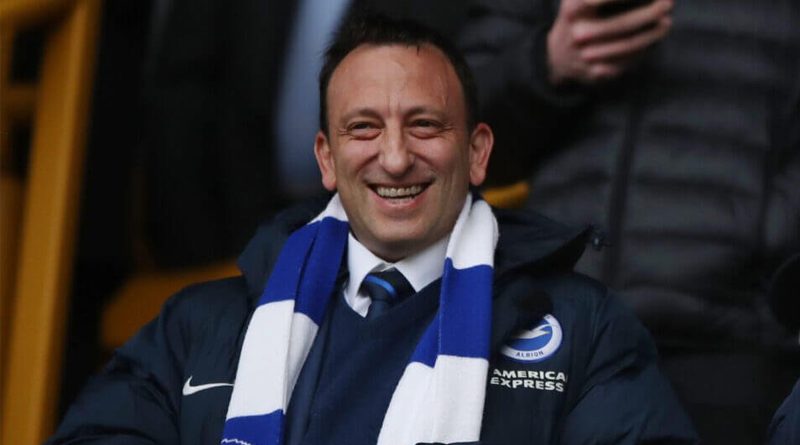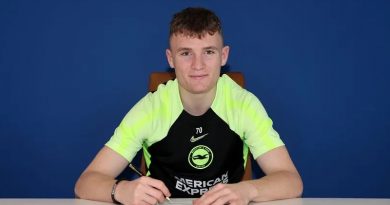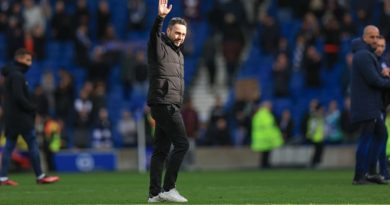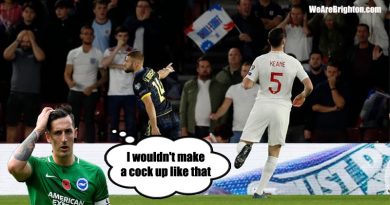Tony Bloom factor means Brighton will not “do a Southampton”
Whilst Brighton fans eagerly anticipate the second half of the 2022-23 Premier League season and what it might bring, supporters of other clubs are not waiting to tear the Albion down with the most frequently heard suggestion being “do a Southampton”.
And now the Southampton theory has popped up in mainstream media, led by chief football correspondent at The i Sam Cunningham.
In a piece entitled The Premier League’s Big Six tore apart Southampton, now they are doing the same to Brighton, he essentially argues that the Albion will soon join the Saints back in the nether regions of the Premier League once Chelsea, Arsenal and the rest have finished picking over the bones of Roberto De Zerbi’s squad.
“Brighton will — rightly so — cling to the hope of a glittering system, a well-oiled model of a club, that they can keep unearthing these players and selling them onwards and upwards,” writes Cunningham. “They are a phenomenally well-run football club. But there’s no guarantee it can last forever.”
Cunningham is right when he says there is no guarantee it can last forever. But that is football. Even Manchester City with the wealth of an oil-rich nation state behind them are playing catch up with Arsenal this season.
And if success is not guaranteed at sportswashing empires like City and Newcastle United, it certainly is not for a club like Brighton.
But he – and the rest of football – are wide of the mark comparing the Albion with Southampton. At risk of upsetting a lot of readers, Brighton have achieved nowhere near what the Saints did, to the point that Southampton fans might even take offence at being compared to the Seagulls.
One ninth place for the Albion does not touch four consecutive seasons finishing in the top eight between 2013-14 and 2016-17, reaching Wembley in the League Cup final and twice qualifying for the Europa League.
If Brighton can go onto emulate what the Saints did during those four years, then happy days. And Southampton certainly seem to have provided a blueprint for Tony Bloom, which is where those similarities on the surface which Cunningham points out come from.
Look a little deeper, however, and you see Brighton are in a very different place compared to the Saints at the end of their high-flying period in 2017.
Southampton were Brighton’s predecessors as the small club with a modest budget punching well above their weight through a transfer policy the envy of English football.
Their squad was constantly ransacked by the big six. Rickie Lambert, Adam Lallana, Luke Shaw, Dejan Lovren, Calum Chambers, Nathaniel Clyne, Morgan Schneiderlin, Victor Wanyama, Sadio Mane and Virgil van Dijk were all sold and yet there was no noticeable drop off in performances or results.
The Saints simply found another young, talented player to take the place of their departed star and continued to challenge for European football.
They even survived losing two managers. Mauricio Pochetinno was poached by Spurs and Ronald Koeman walked out for Everton, although neither arrived at their new clubs sporting a Glow Up so extreme it was covered by GQ Magazine in New York.
Like Brighton waving goodbye to Graham Potter and upgrading with De Zerbi, Southampton simply found another head coach and the train kept running.
Buy potential, turn it into world class talent, sell for a massive profit and then starting the cycle all over again. Sounds familiar, doesn’t it?
So, you can kind of understand the comparisons to Southampton. It was an approach which had a shelf life of four years before all the sales eventually caught up with the Saints and that is what will happen to Brighton eventually, or so the theory goes.
Except of course that is not quite true. Whilst it is bloody difficult to challenge for the top eight if you sell one or two star players every summer, you can also trace the moment that Southampton dropped to a change in ownership.
Having climbed from League One through the Championship and onto top flight finishes of 14th, 8th, 7th, 8th and 6th in the Premier League under the Liebherr family, Chinese businessman Gao Jisheng bought 80 percent of Southampton in August 2017.
The Saints have subsequently finished 17th, 15th, 11th and 15th. Last season’s 15th place finish after Serbian media magnate Dragan Solak bought out Jisheng in January 2022, whilst the current campaign again sees Southampton embroiled in the the relegation battle.
Solak appears to be attempting to return to the successful approach of the Liebherr family’s majority ownership. They are signing young players and have appointed a certain Nathan Jones to be a progressive head coach wanting to prove himself at the highest level.
It is Gisheng’s four-and-a-half seasons at the helm of Southampton which make comparisons between Brighton and what happened at St Mary’s difficult to justify.
Whereas the Saints moved away from the Liebherr model, Bloom is not very likely to be selling to a Chinese businessman with different ideas anytime soon.
And as long as Bloom and the unique algorithms transferred from Starlizard to Brighton’s transfer policy remain at the Amex, then Brighton stand a much better chance than Southampton did of extending their challenge to the top eight beyond four years.
That is not to say it will last forever. The well of talent could dry up. Starlizard’s data and the club’s recruitment team might stop pulling South American rabbits out of the hat.
When the likes of Pascal Gross, Lewis Dunk, Joel Veltman, Adam Lallana and Danny Welbeck move on or retire, how do you replace their experience? That is the one attribute no Argentine or Ecuadorian wonderkid can replicate.
For now though, the Brighton model is working. Southampton went awry when they strayed from what worked. That will not be a factor at the Albion – and in any case, Seagulls supporters should be allowed to enjoy the moment rather than worrying about it ending.




